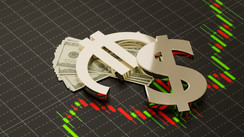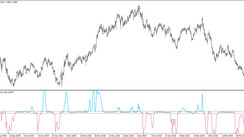As a result of the meetings held in October and November, the Reserve Bank of New Zealand (for the first time in 7 years) raised its key interest rate to 0.50%, and then to 0.75%. The rate was raised to dampen inflation and contain rapidly rising home prices. Earlier, the RBNZ said that the economy no longer needs the current level of monetary stimulus.
Despite the increase in interest rates, the New Zealand dollar weakened, including against the US dollar, after the publication of the Reserve Bank of New Zealand's short-term interest rate forecast, which fell short of market expectations. RBNZ officials said at the time that they now intend to take a wait-and-see approach to assess the impact on the economy from the decision on the interest rate, and this seems to have disappointed investors. Usually, an increase in the interest rate has a positive effect on the quotes of the national currency. However, in this case, the reaction of the market was the opposite. The NZD declined shortly after the publication of the RBNZ decision to raise interest rates. The conclusion suggests itself that this increase was already priced in, and the reserved position of the RBNZ management regarding the further prospects for monetary policy disappointed investors.
The bank predicted that the rate would reach a peak of 2.6% by the end of 2023 (the previous forecast of the Central Bank assumed that the rate would reach 2.1% by the beginning of 2024). Still, the forecast turned out to be weaker than the market expectations reflected in the quotes, amid various risks and uncertainty in the economic outlook.
The New Zealand dollar is also negatively affected by the dynamics of the country's GDP. There was a fall in GDP in the 3rd quarter by -3.7% (after an increase of +2.8% in the 2nd quarter of 2021). Data for the 4th quarter will be published in mid-March 2022, and here, too, economists do not expect strong growth.
For the previous 3 months, the NZD/USD pair has been mainly declining and at the end of January it reached a local 16-month low near 0.6530.
However, this month the NZD/USD is growing, also due to the weakening US dollar. Released earlier this week, the minutes of the Fed's January meeting dampened expectations of a more aggressive tightening of the US central bank's policy.
After last week the US Department of Labor reported another increase in consumer inflation in the country (the consumer price index (CPI) rose by +7.5% (in annual terms) in January after rising by +7.0% in December), increased talk that the leaders of the Fed may raise interest rates at the March meeting by 50 basis points at once. Some market participants and economists even assumed that this year the Fed's interest rate would be raised another 5-7 times.
However, the minutes of the Open Market Committee meeting do not confirm this: they only reiterate that decisions to tighten policy will be considered from meeting to meeting.
Nevertheless, the intrigue around the actions of the Fed remains, and before the next meeting on March 15-16, its leaders still have enough time to make further adjustments to their plans for monetary policy.
So, on Thursday, Fed officials and FOMC members James Bullard and Loretta Mester spoke in favor of tougher measures. Bullard advocates raising the key rate by 1 percentage point by July, as well as starting to reduce the Fed's asset portfolio, which is close to $9 trillion, in the 2nd quarter. Although, other members of the Fed leadership do not share his opinion. For example, Minneapolis Fed President Neil Kashkari said on Thursday: “If we raise rates too aggressively, we risk a sharp slowdown in the economy, plunge it into a recession and possibly return it to where it was before the pandemic, when inflation was too weak".
At the time of publication of this article, the NZD/USD pair is traded near the 0.6721 mark, coming close to the strong resistance level 0.6730. The pair received support yesterday after the publication of weak data from the US on the dynamics of applications for unemployment benefits. The number of initial applications in the previous reporting week increased to 248 thousand (against the forecast of 219 thousand and the previous value of 225 thousand).
While the views of the Fed leadership regarding the pace of interest rate increases are divided, the RBNZ leadership is pursuing a more transparent policy. Thus, next week the next meeting of the RBNZ will be held, during which, as expected, its interest rate will be raised again, to 1.0%. Thus, the RBNZ is becoming a leader in the process of tightening monetary policy among other major global central banks, and this may become a strong and main driver for the strengthening of the NZD in the next few weeks, although here too much will depend on the current economic situation in the country and in the world.
As a reminder, the decision of the RBNZ on the interest rate will be published on Wednesday at 01:00 (GMT).





